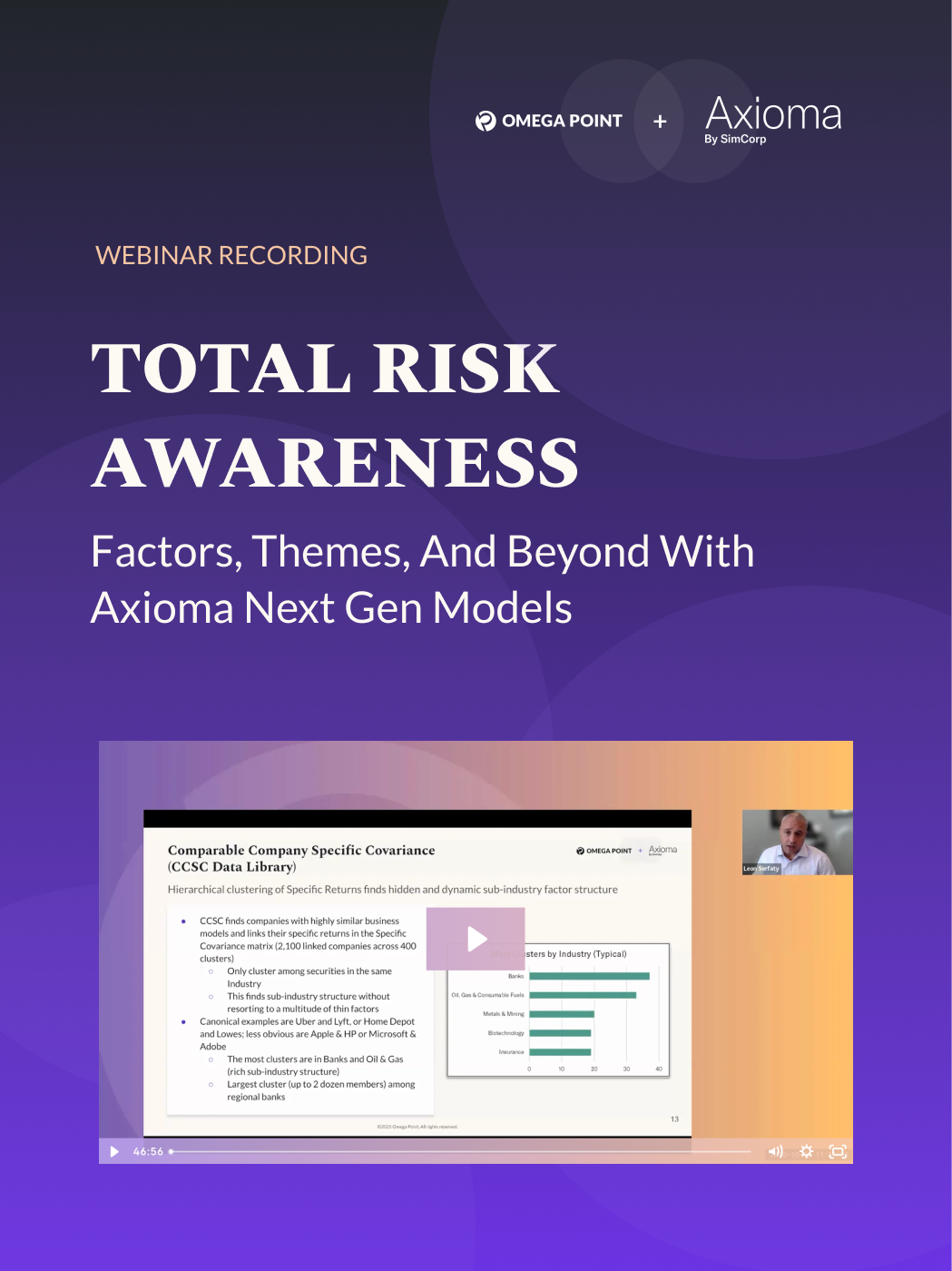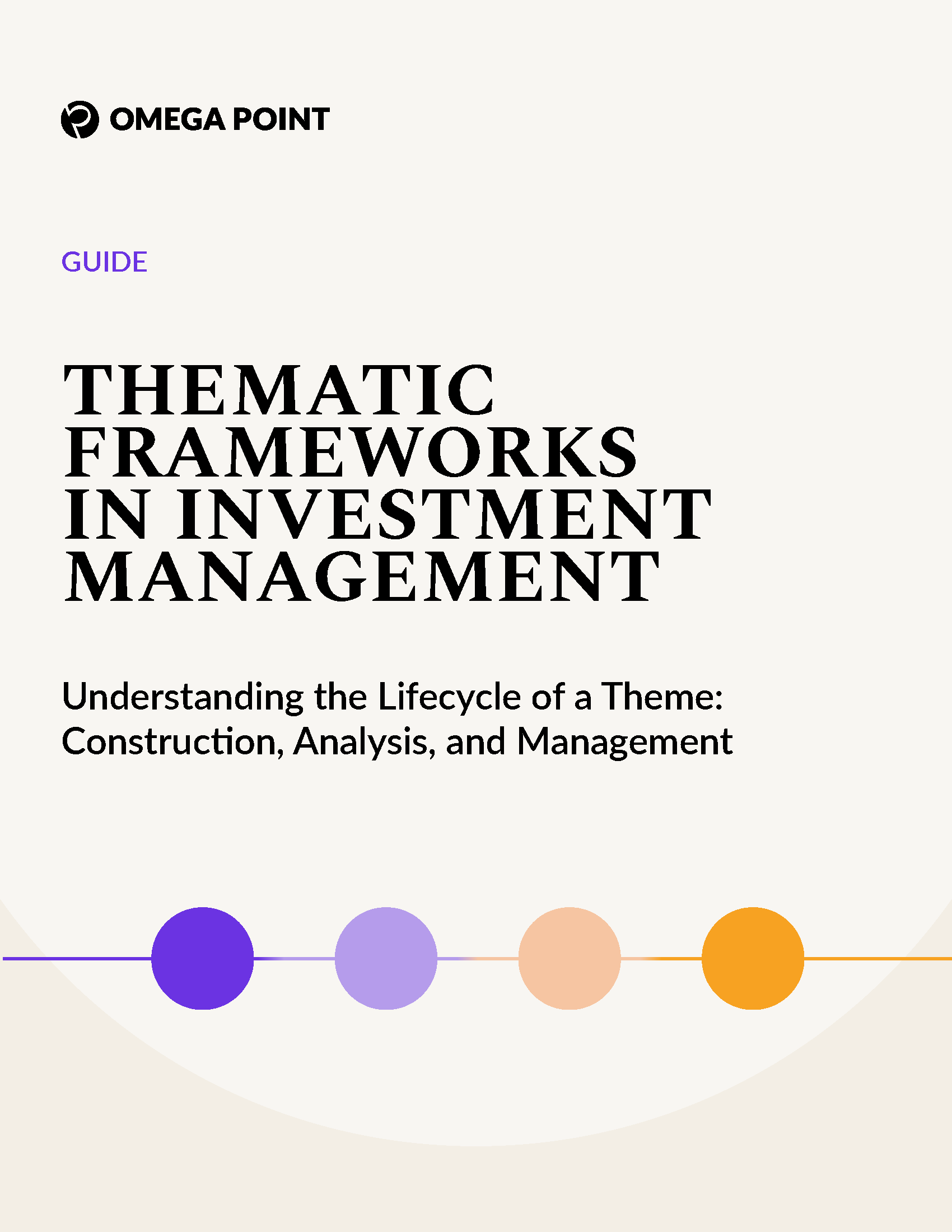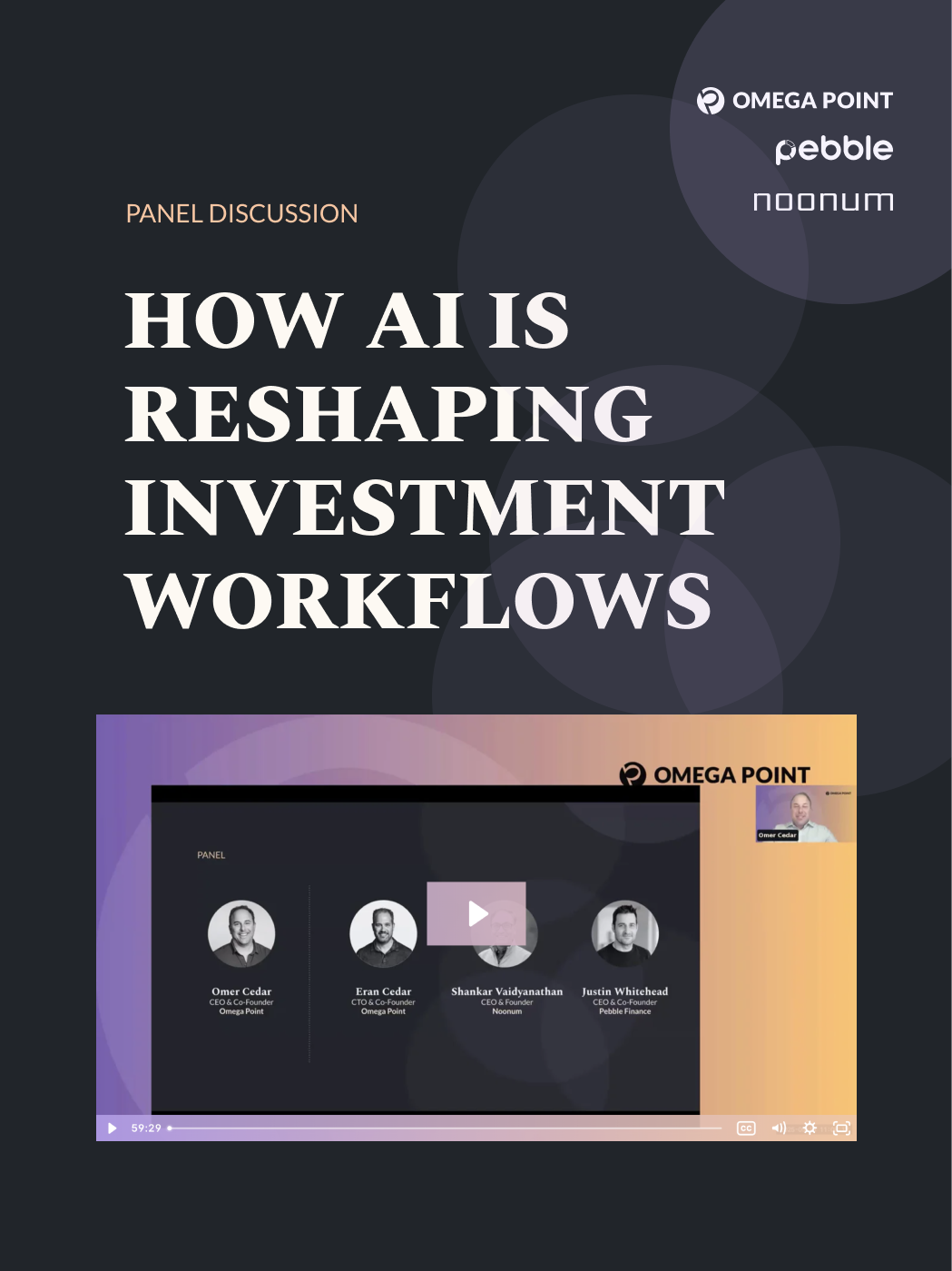Q3 Thematic Review and Current Portfolio Implications
This article was authored in collaboration with Omer Cedar, Omega Point Co-Founder and CEO
Themes continue to grow in importance for investment teams as they look to understand how short-term market dynamics intersect with long-term structural change. Integrating themes into portfolio management means looking at the signals that have already emerged to understand how they may shape what comes next. This article highlights several themes that stood out in the third quarter of 2025 and explores what they could mean for investors in the months ahead.
Understanding Thematic Factors
Traditional risk models are built to capture long-term structural drivers such as growth, value, momentum, and liquidity. Yet shorter-lived forces—tariff policy shifts, technological disruption, or evolving capital expenditure cycles—can move markets in meaningful ways. These transient drivers often exist outside the scope of conventional risk models, even though they can have a material effect on portfolio performance.
At Omega Point, we identify and quantify these exposures so portfolio managers can understand how themes are shaping risk and returns. Learn more about our approach to themes in this webinar.
Dominant Themes in Q3 2025
We examined more than five hundred thematic indexes derived from Omega Point’s investment bank partners and ranked them based on their cumulative Thematic Factor Return (TFR), Normalized Factor Volatility (NFV), and consistency of the factor return stream. The nine themes below exhibited the strongest and most consistent influence on stock-level returns during the quarter.

Source: Omega Point, Q3 2025 Thematic Review.
Theme Insights
Tariffs: President Trump’s unorthodox approach to trade negotiations has created economic uncertainty for companies exposed to foreign trade, which naturally translates into higher stock price volatility. A comprehensive analysis of this volatility event requires careful examination of where a company builds and sells its products, the diversification of its supply chain, the complexity of its operations, and its alignment—or lack thereof—with the broad political mandate of President Trump. Two firms with identical industry and style characteristics can have very different tariff risk profiles, resulting in latent systematic risk associated with themes such as Onshoring Beneficiaries, China Supply Chain, and China Sales Exposure.
Artificial Intelligence: Certain themes originate in a single industry but often grow large enough to build an ecosystem of their own that transcends multiple industries and investment styles. For example, AI started off as a theme limited to the software and semiconductor industries but soon became a force impacting firms in hardware, power, consumer, and financial services sectors. Risk characteristics of such “expanding” themes are unique and not easily captured by a traditional style–industry construct. Furthermore, not all companies in the same industry participate equally in these mega-themes, creating intra-industry effects. For example, while several utility firms have announced partnerships to supply power to AI companies, many others have stayed on the sidelines. Similarly, the exposure of chip-making firms to the AI theme has varied significantly, with Intel and Nvidia occupying opposite bookends. Intra-industry effects of this type endow themes with unique systematic risk characteristics that remain hidden within the residual returns of commercial risk models. This dynamic partly explains the appearance of themes such as AI Data Centers, PC AI Upgrades, and CapEx Beneficiaries.
Emerging Themes: Finally, a broad industry-specific economic theme can often gather enough momentum to become a powerful, although transient, systematic risk factor. After blossoming for several years under the favorable combination of low interest rates and high disposable income, the U.S. Housing sector is starting to show signs of strain. Because the housing sector has strong connections with companies in industrials, materials, and consumer sectors, these strains have propagated to other parts of the economy, creating fertile ground for a systematic risk factor. As shown in Exhibit 1, the U.S. Housing theme has a Normalized Factor Volatility (NFV) of 110%, implying that it is riskier than a median style factor in commercial risk models. Similar arguments apply to Infrastructure and Meme Stocks themes.
Lessons for Portfolio Managers
Several lessons stand out across these themes:
- Short-term factors can be systematic. Many transient narratives behaved like established style factors, creating measurable and repeatable patterns of risk and return.
- Themes cut across sectors. AI infrastructure, CapEx, and onshoring all spanned industries, challenging traditional classifications and highlighting the need for cross-sector analysis.
- Volatility has thematic roots. The volatility of several themes was comparable to that of median style factors, indicating that thematic risk cannot be ignored in portfolio construction.
- Engagement matters. Themes that remained statistically significant across more trading days are often those likely to persist into future quarters.
Looking Ahead
Several of Q3’s themes remain relevant as we move through Q4 and into 2026. AI infrastructure and CapEx spending continue to expand. Onshoring remains an active policy and capital allocation story. Infrastructure spending is still absorbing investment dollars. Conversely, housing and China-related exposures warrant close monitoring for signs of further pressure.
Themes are evolving faster than traditional risk models can adapt. For investment teams, managing them effectively requires both quantitative measurement and qualitative context. The ability to identify, monitor, and interpret these drivers is becoming an essential component of portfolio management.
Methodology and Definitions
Omega Point’s analysis applied a Fama–MacBeth two-step regression framework to isolate the impact of transient thematic factors from broader style and industry influences.
We examined over five hundred thematic indexes derived from Omega Point’s investment bank partners and ranked them by cumulative Thematic Factor Return (TFR), Normalized Factor Volatility (NFV), and the consistency of their factor return streams.
- Thematic Factor Return (TFR): Calculated daily by regressing residual stock returns against thematic betas. The results are compounded across the quarter to measure total impact.
- t-statistic: Measures the statistical reliability of each theme’s relationship to returns. Values above roughly 2.0 indicate a strong, non-random signal.
- Thematic Engagement: Represents the share of trading days where the theme was statistically significant (t-stat above ±1.96), indicating persistence in market pricing.
- Normalized Factor Volatility (NFV): Compares the volatility of each theme to that of a median style factor, helping contextualize relative risk.
- Factor-Mimicking Portfolio (FMP): Constructed monthly using a buy-and-hold approach to reflect how each theme performed over a longer holding period.
This methodology allows investment teams to identify and manage exposures to emerging and transient factors that traditional risk models often overlook.
This article references content from A. Saxena and O. Cedar, 2025 Q3 - Thematic Review, Systematic Perspectives, October 20th, 2025.



